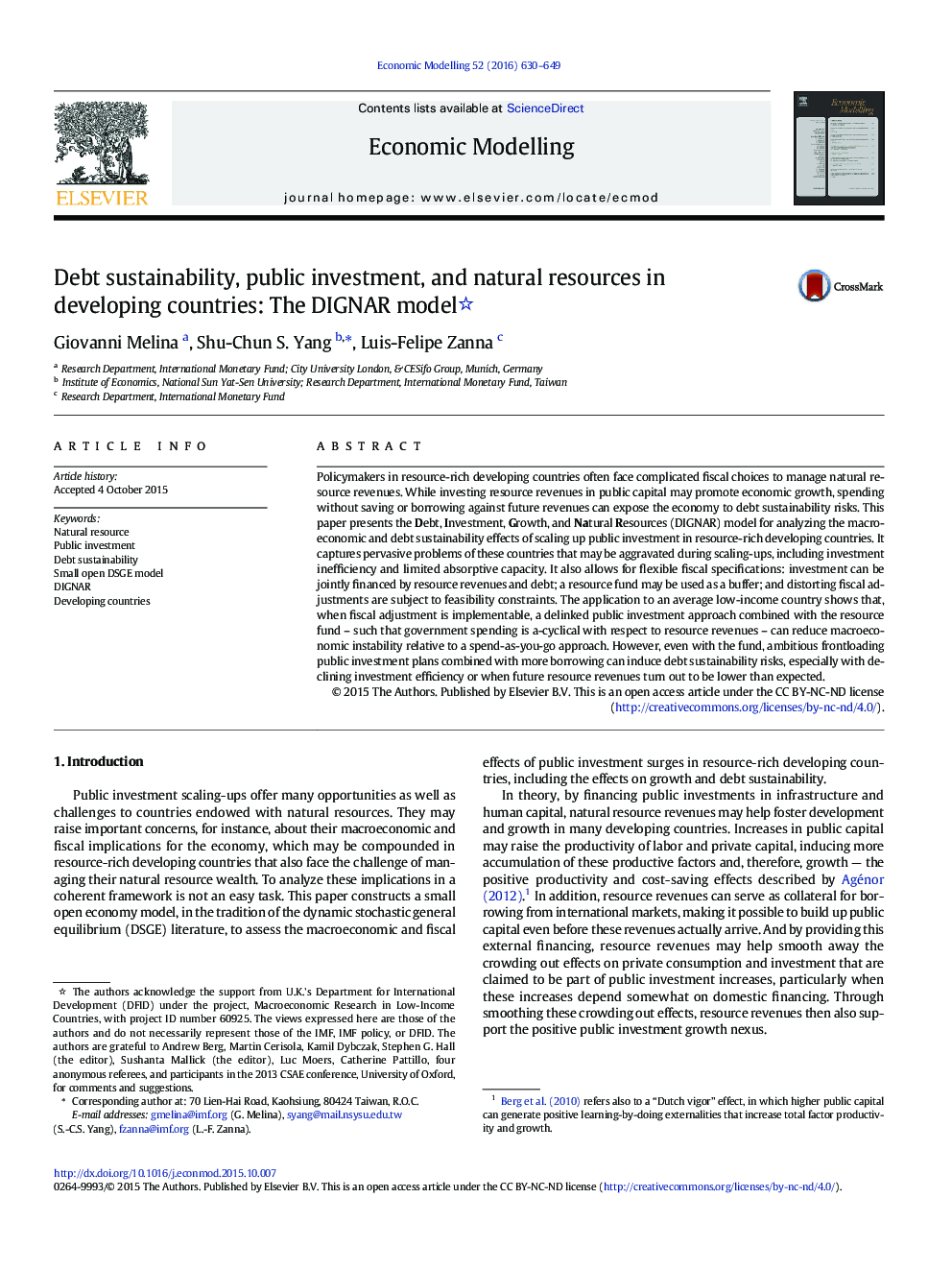| کد مقاله | کد نشریه | سال انتشار | مقاله انگلیسی | نسخه تمام متن |
|---|---|---|---|---|
| 5053663 | 1371457 | 2016 | 20 صفحه PDF | دانلود رایگان |

- DIGNAR is a DSGE model developed for resource-rich developing economies.
- It helps assess the effects of public investment on growth and debt sustainability.
- A delinked investment path with a resource fund can reduce macro instability.
- Ambitious front-loaded public investment plans can bring debt sustainability risks.
- Investment efficiency, absorptive capacity, and resource revenues play a key role.
Policymakers in resource-rich developing countries often face complicated fiscal choices to manage natural resource revenues. While investing resource revenues in public capital may promote economic growth, spending without saving or borrowing against future revenues can expose the economy to debt sustainability risks. This paper presents the Debt, Investment, Growth, and Natural Resources (DIGNAR) model for analyzing the macroeconomic and debt sustainability effects of scaling up public investment in resource-rich developing countries. It captures pervasive problems of these countries that may be aggravated during scaling-ups, including investment inefficiency and limited absorptive capacity. It also allows for flexible fiscal specifications: investment can be jointly financed by resource revenues and debt; a resource fund may be used as a buffer; and distorting fiscal adjustments are subject to feasibility constraints. The application to an average low-income country shows that, when fiscal adjustment is implementable, a delinked public investment approach combined with the resource fund - such that government spending is a-cyclical with respect to resource revenues - can reduce macroeconomic instability relative to a spend-as-you-go approach. However, even with the fund, ambitious frontloading public investment plans combined with more borrowing can induce debt sustainability risks, especially with declining investment efficiency or when future resource revenues turn out to be lower than expected.
Journal: Economic Modelling - Volume 52, Part B, January 2016, Pages 630-649